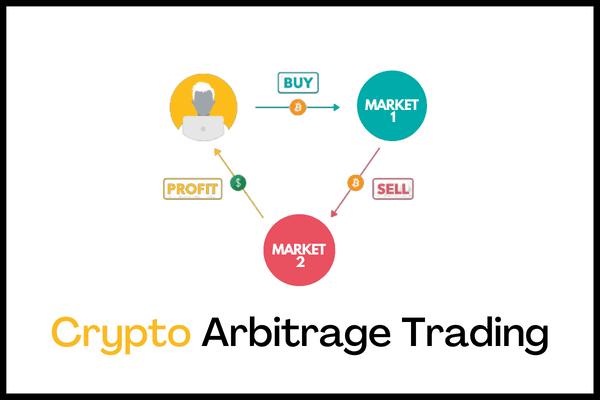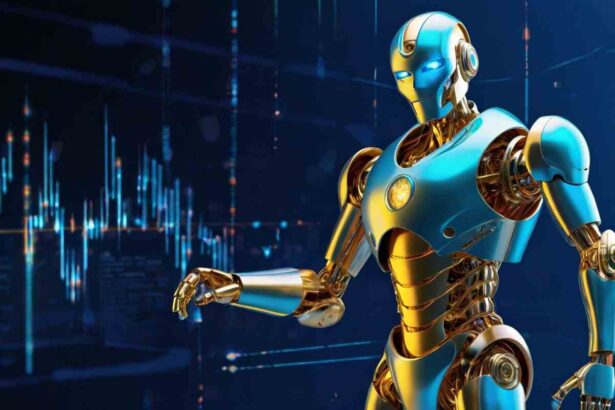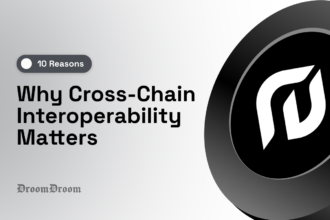Bots and algorithms are connected tools for easing crypto futures trading activities and birthing faster results. More importantly, experts have predicted bots and algorithms will keep impacting the futures market.
Trading bots and algorithms are always designed to follow instructions from a mathematical model. This type of trading is also known as automated or algorithm trading because it eliminates manual trading but depends on computer programming.
Trading bots and algorithms cover many human limitations, the leading being the inability to process a vast amount of data. With bots, traders can eliminate emotional biases and make informed trading decisions.
How Bots and Algorithm Trading Works
In crypto futures trading, traders are expected to enter or exit a trade within a particular period. What bots and algorithm trading do is make these decisions automatically without hesitation. Thus, investors can rapidly buy or sell an asset amid a chaotic market.
Generally, strategies are essential in crypto futures trading, so algorithm trading doesn’t negate the need to include the right strategies. Thus, the output of algorithm trading is based on the developer’s strategies, and each strategy has its risk profile and objectives.
Before moving on, read this article on the top 5 strategies pro-crypto futures traders swear by.
Some of the strategies that determine the outcome of algorithm trading include:
Trend Identification
Bots and algorithms trading involves using moving averages to identify market trends. The computing program uses codes to identify the asset’s volume, price, community support, and other factors that could influence its market value. Thus, the trading automatically buys and sells during favorable market moments.
Arbitrage
Bots and algorithms use the arbitrage strategy to compare the prices of cryptocurrencies on different exchanges. It allows investors to buy a stock or asset at a lesser price and sell at a higher price within the same market. This trading strategy is usually fast-paced because the price differences don’t exist long.

Mean Reversion
This strategy involves setting a crypto asset’s average high or low. Thus, when the asset price changes significantly from the mean value, the machine chooses to sell or buy to earn some profits.
Benefits of Bots and Algorithm Trading
According to an Investopedia report, automatic trading systems are responsible for 70%-80% of the shares traded on the U.S. stock exchanges. This is because bots and algorithm trading provides several benefits to traders, including but not limited to:
Reduces Emotions
Putting emotions before trading decisions exposes a crypto futures trader to great risk. Emotions, such as fear or greed, could tamper with the outcome of trading activities. Algorithm trading can help reduce a trader’s possibility of undertrading or overtrading, but only by ensuring they stick to the planned strategy.
Diversify Trading
Since algorithm trading doesn’t involve active participation, they can diversify their portfolios by investing in different assets simultaneously. Thus, traders can spread risk across portfolios and hedge against losing positions.
Faster Execution
Algorithm trading executes orders quickly and immediately, meeting the necessary criteria. The machine can immediately recognize the need to enter a market and act fast on it. Meanwhile, it would have been impossible for a human to monitor market movements every millisecond accurately.
Encourages Discipline
In a highly volatile market, some traders are often confused about the next step. Even though profit is uncertain in crypto trading, you can be sure to earn a consistent reward after mastering the system. It may be difficult for some traders to continue with their trading plan or be disciplined towards their approach—the bots and algorithm trading system help to solve this problem.
Drawbacks of Bots and Algorithm Trading
The major drawbacks of the bots and algorithms trading system are the risk of technical failure, over-optimization, and exposure to scams.
Risk of Technical Failure
The fact that bots and algorithms trading are solely based on technology doesn’t make them infallible. For instance, if a trading platform puts its trade order on a computer and the internet connection gets lost, the market may not receive your order. Also, bots and algorithms trading largely depend on data input, so machines may make the wrong trading decision if data is not correctly inputted.
Case Study
The Knight Capital Group’s unfortunate experience on August 1st, 2012, is a case study of a failed technical algorithm trading. This hurt up to 148 companies listed on the New York Stock Exchange. The machine bought assets at a high price and instantly sold at a lower price. This seemingly simple error caused the Knight Capital Group a pre-tax loss of $440 million within a few minutes.
Over-Optimization
Since bots and algorithms trading work with data optimization, there is a risk of over-optimizing. A machine may be overly designed to execute transactions based on data without considering changing market conditions. Also, traders often use historical data to understand a strategy outcome. Some of these highly unreliable curve-fitting approaches cannot be used in live trading.
We asked the co-founder of Solus if he thinks over optimization can be completely tackled in the near future.
Data over optimization is something that can only be perfected with time, but can never completely overcome its weaknesses. This is why trading still is heavily dependent on human sentiments at large, which are very complex hence very difficult to predict via an algorithm or Al.
Nelson Malath, Co-Founder of Solus.
Exposure to Scam
Bots and algorithms trading have helped individuals become rich over the years; unfortunately, some scammers use this same approach to dupe crypto traders. They propose a profit return that seems too good to be true, and the impatient traders fall for such a scam. This raises ethical concerns among investors, as algorithm traders are more concerned about profit than generating values or long-term economic stability.
What Does the Future Role of Bots and Algorithms In The Futures Market Look Like?
Experts have also predicted that bots and algorithms will spike the rate of futures market trading in the coming years. Let’s look at how bots and algorithm trading popularity has grown in the past few years.
Research shows that the world market of algorithm trading grew by 10.3% between 2016 to 2020. During these periods, crypto futures traders bought and sold assets quickly for a huge profit. Also, reports show that about 70% of the US trading activities are algorithm trading.
So, what’s the future impact of bots and algorithms?
In an overall market, I think algorithms are very much here to stay, especially if you look globally because of the increasing use of algorithms across the European equity markets.
David Easthope, A Senior Analyst.
Smarter Bots
With the rise of Artificial Intelligence tools, bots and algorithms will be smarter with crypto dealings and making the right trading decisions. Even though some regulations may establish regulations that curb algorithm trading, due to associated risks, it will only get smarter.
Again, here is what the Co-founder of Solus, Nelson Malath, thinks about smart bots’ role in birthing lazy traders:
“In the short term, yes, however the more people start using bots and algorithmic trading with an intention to be lazy traders, it would gradually morph into diminishing marginal returns, which would then urge them to not be lazy traders if they want to make money via trading.”
Round The Clock Trading
The global market will have heightened 24/7 trading results. Algorithms can monitor the market situations day and night and wouldn’t hesitate to purchase or sell assets. As a result, the global market will keep exploiting the inefficiencies in the conventional trading method.
Faster Trading
Even though bots and algorithm trading currently operate fast, experts have predicted a faster trading speed for the future. The algorithm can grow far beyond human capabilities as computing power and connectivity technologies improve. This will also raise trading volumes and, in turn, volatility.
Considering bots and algorithm trading play a great role in the future of the trading market, we discovered it has yet to be adopted by most trading platforms. This includes the Solus Finance trading platform, known for achieving great milestones in less than one year of launching into the futures trading industry. Here is a tweet confirming the company’s growth.
🚀 NEW MILESTONE ACHIEVED
🙇🏻 Thank You for 100,000+ transactions
📊 Start trading at https://t.co/C39GFnLQ7T pic.twitter.com/CQMwD4LYRF
— Solus (@SolusFinance) October 3, 2023In an interview with another Solus co-founder, Sanghita, who is an expert trader, here is what she has to say:
We would join algorithm trading eventually, but the reason we don’t want to create a board right now is because of our market and target audience. We are targeting retail investors, and its important investors understand the concept of algorithm trading deeply before delving into it.
I also think a lack of proper understanding of leverage may cause users not to make the best use of algorithm tools. But as more investors get comfortable with this form of trading, we can get deeper into it.
She concluded that algorithm trading will help investors achieve a long-term profit. However, it also comes with its risks, especially for traders who don’t have adequate knowledge about how algorithm trading works.
Conclusion
Bots and algorithms trading can impact the futures market in the coming years. However, it’s essential to emphasize that the success of algorithm trading is not without the human brain or effort. It still requires the input of an expert programmer to set the appropriate codes. This further establishes that humans also play a role in determining the impact of bots and algorithms in the futures market.




















